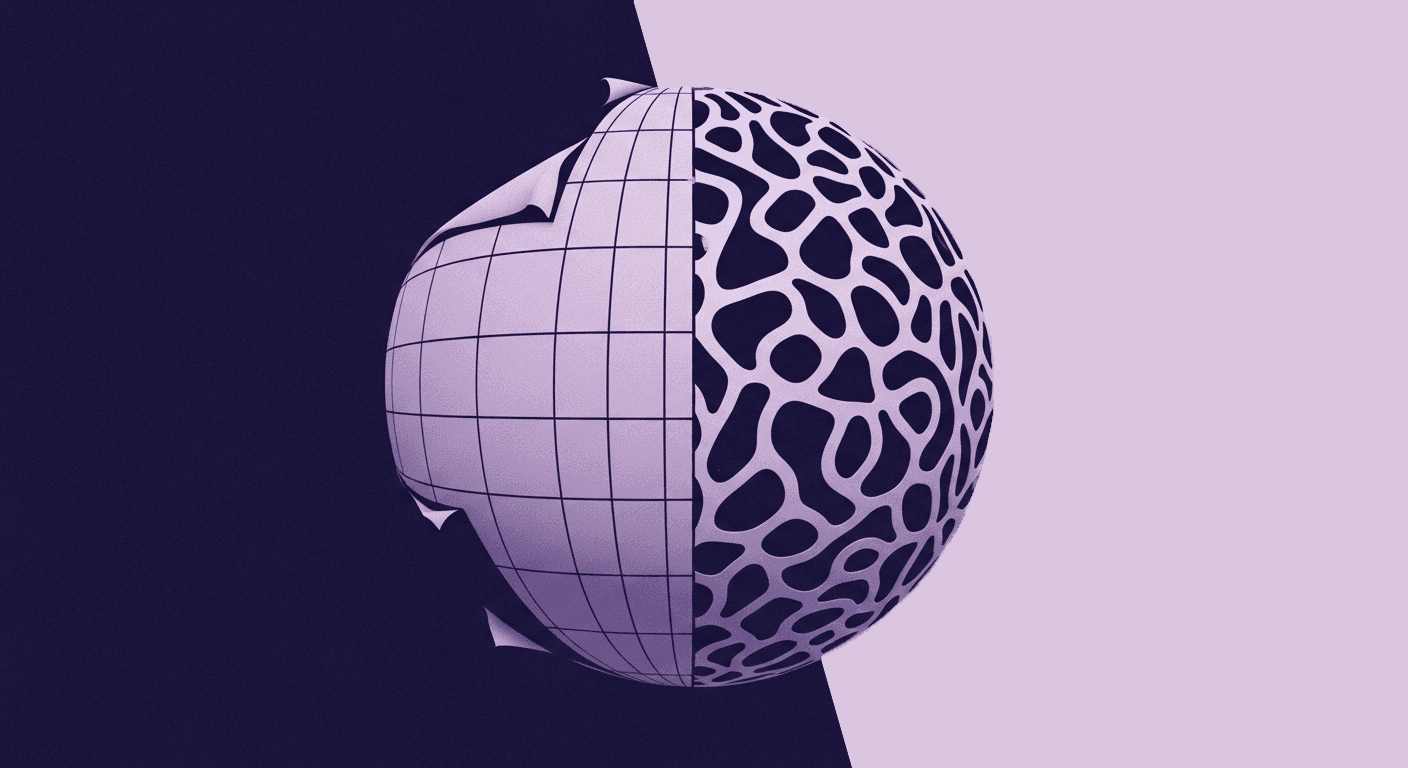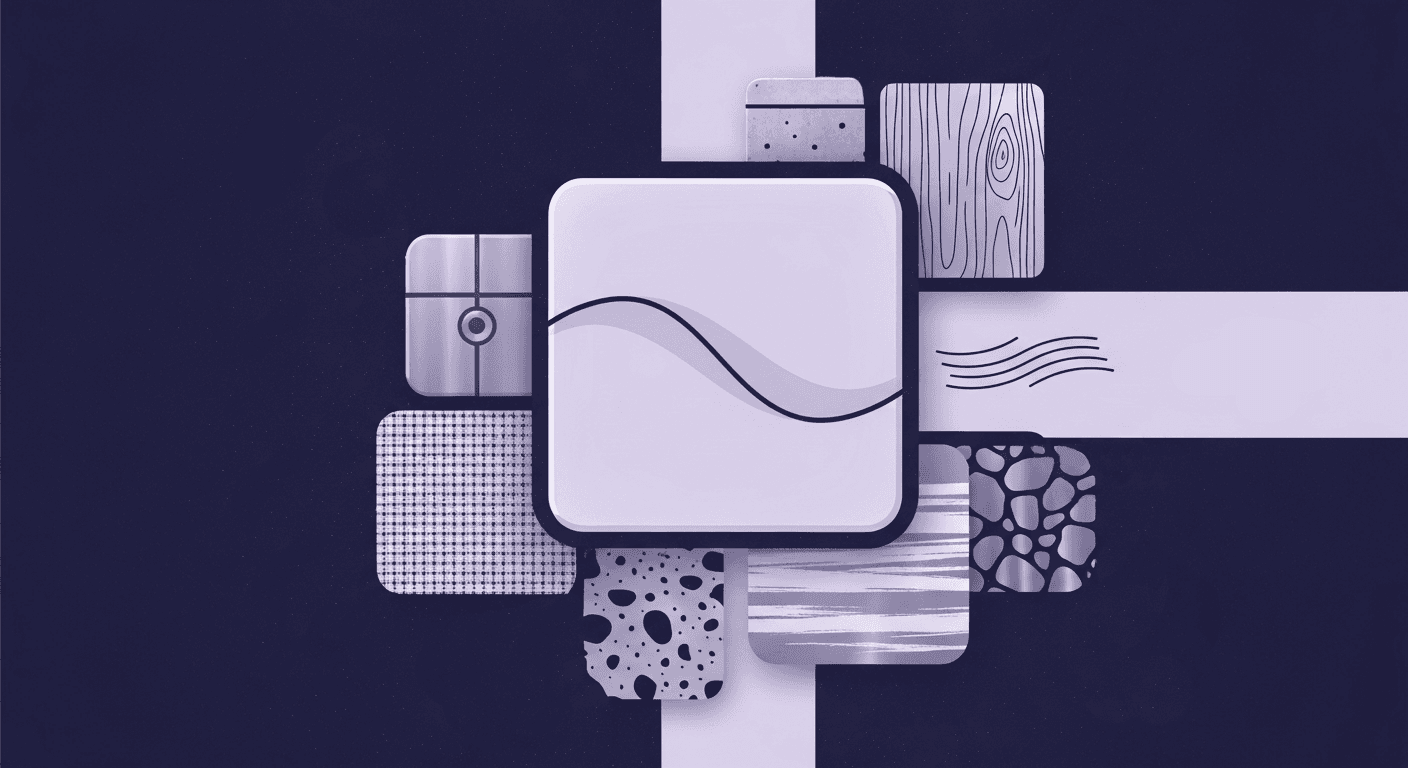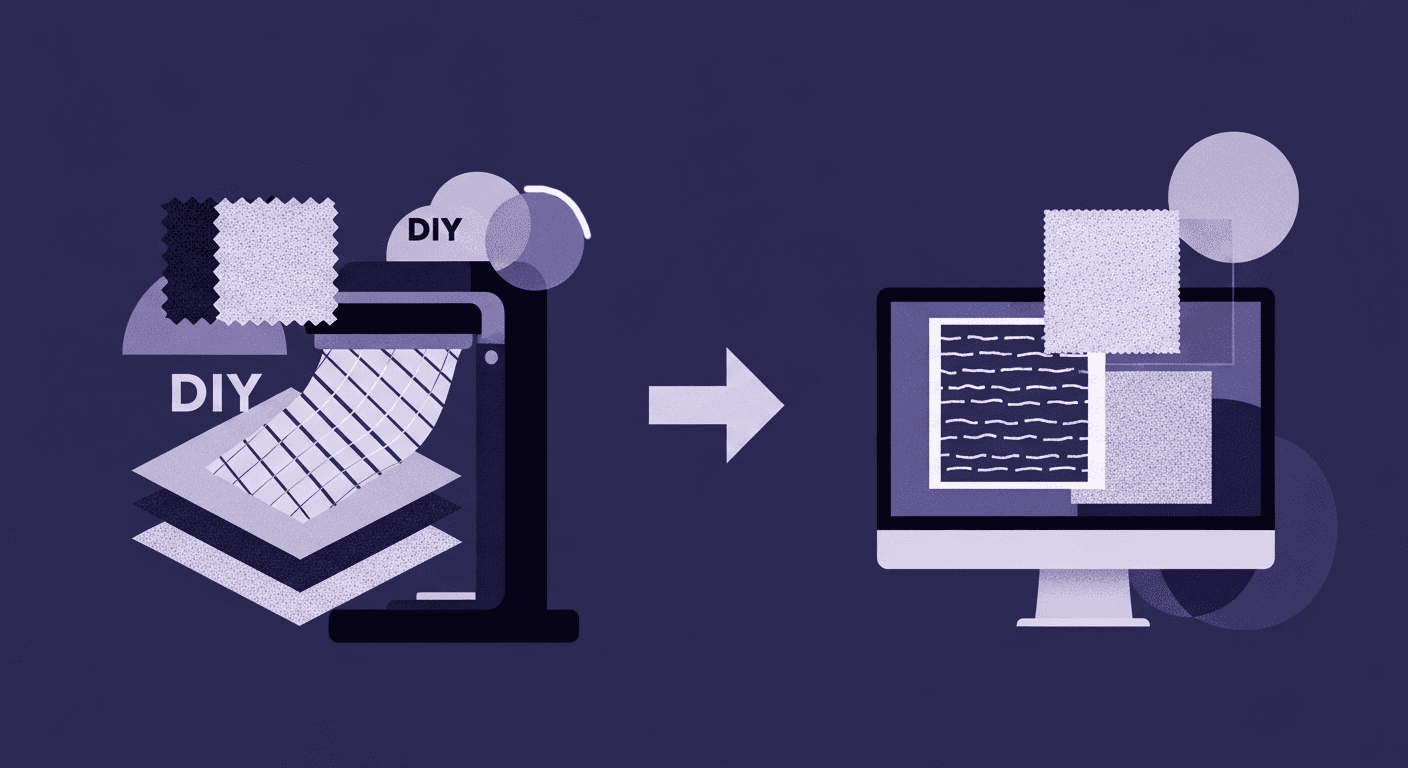Why 360 Environment Textures Are the Future of Gaming Immersion
By Mira Kapoor | 31 October 2025 | 15 mins read
Table of contents
Table of Contents
You’ve spent hours crafting your world, only to see a repeating pattern pull the player right out of the world you’ve painstakingly built. This guide unpacks the move to 360 environment textures, breaking down the advanced rendering techniques that create seamless, truly immersive worlds, and most importantly, how you can leverage them without a Hollywood budget. We're moving beyond digital wallpaper and into an era of dynamic, believable materials. Understanding this shift isn't just a graphical upgrade; it's about building the foundational skills you'll need for the future of interactive design.

Understanding the foundation: What are 360 environment textures?
Before we dive into the cutting-edge tools and rendering techniques, it’s essential to understand what 360 environment textures actually are. And why they represent such a leap forward from traditional workflows. At their core, these textures redefine how we think about surfaces in 3D spaces. Instead of relying on flat, repeating patterns stretched across geometry, 360 environment texturing wraps the world in continuous, seamless material data that feels alive from every angle. To grasp the power of this shift, let’s break down how it differs from conventional UV-based texturing and why it’s transforming the way we build believable digital worlds.
How do 360 environment textures differ from traditional rendering?
Traditional texturing is all about UV mapping, unpeeling a 3D model into a 2D plane, and painting inside the lines. This forces you into a workflow of creating tiling textures, which are great for flat floors or brick walls, but quickly break down on organic or complex surfaces. The result? Repetitive patterns, visible seams, and a world that feels subtly artificial, like it's covered in digital wallpaper.
360 environment texturing moves beyond this flat, tiled approach. Think of it less like wallpaper and more like spray-painting a model from every angle at once, ensuring the material properties are consistent and seamless no matter where you look. This is made possible by two key technologies:
- Procedural generation: Instead of using a static, pre-made image file, procedural textures are generated by algorithms in real-time. The engine follows a set of rules, a recipe to create infinite variations of a material. This means no two rocks or patches of dirt have to look the same, completely eliminating the tell-tale repetition that screams "I'm a video game." It’s the difference between laying down identical squares of sod and growing a natural, varied lawn.
- Photogrammetry: This technique involves capturing hundreds of photos of a real-world object or location and using software to reconstruct it as a hyper-realistic 3D asset, complete with accurate texture and material data. The result is an asset that isn’t just art-directed to look real; it’s derived from reality itself, bringing an unparalleled level of authenticity to your virtual worlds.
These methods free you from the rigid constraints of the UV grid, allowing you to texture entire environments holistically.
Why this matters for creating truly immersive game environments
Standard texturing gets the job done, but it often leaves a gap between what the player sees and what their brain is willing to believe. When a player notices a texture repeating across a vast landscape or a seam running down a tree trunk, the illusion of presence is momentarily shattered. These small imperfections accumulate, reminding the player they are in a simulation.
360 environment textures close that gap. By creating a world that is visually continuous and non-repeating, you build a much stronger sense of place.
- Believable space: When a cave wall isn’t a tiled rock texture but a procedurally generated surface with unique cracks and mineral deposits, it feels like a real, excavated space. The environment stops being a collection of assets and starts feeling like a cohesive location with a history.
- Physical presence: Realistic materials react to light in complex ways. A 360 texture, especially one derived from photogrammetry, captures all the subtle imperfections, the micro-scratches, the dust accumulation, the subtle wear and tear that tell our brains an object is physically present and has existed in a world. This makes the environment feel tangible and grounded.
Ultimately, this isn't just a graphical upgrade. It’s a foundational shift that allows the environment to become a more powerful storytelling tool. And as we'll see, new rendering techniques are making this more accessible than ever.
The next frontier: Innovations in advanced rendering techniques
So, we know that seamless, non-repeating textures are the goal. But how do we get there without melting our GPUs? The answer lies in a new wave of advanced rendering techniques that are fundamentally changing how game engines handle materials and visuals. These aren’t just incremental improvements; they represent a new chapter in game visual technology.
Upcoming shifts in game visual technology
For years, the workflow has been static: create a texture, import it, and apply it. The next frontier makes this process dynamic, intelligent, and far more efficient.
- Real-time procedural texture mapping: Imagine defining a material not by a set of bitmap images (albedo, normal, roughness), but by a recipe the GPU can follow to cook the texture in real-time, right on the model's surface. This is the power of procedural mapping. Instead of storing a massive 4K texture for a landscape, you store a much smaller set of instructions. The benefits are huge for an artist on a budget:
- Infinite detail: Zoom in as close as you want; the texture detail never pixelates because it's being generated mathematically, not stretched from a fixed image.
- Tiny memory footprint: A complex procedural recipe can be a few kilobytes, whereas a single 4K texture set can be dozens of megabytes. This is a game-changer for performance and project size.
- Dynamic worlds: Textures can change based on in-game events. A material can get wet when it rains, charred after an explosion, or mossy over time, all by tweaking the procedural rules, not by swapping out entire texture sets.
- AI-driven texture generation and enhancement: Artificial intelligence is moving from a novelty to a core part of the artist's toolkit. AI is being used to automate the most time-consuming parts of texturing. Think tools that can take a single photo of a brick wall and generate a full, PBR-compliant material with seamless tiling. Or AI algorithms that can upscale low-resolution textures to 4K or 8K with convincing detail. This doesn't replace your creativity; it handles the grunt work, freeing you up to focus on the art direction.
How 360 environment textures enhance game realism
When these advanced techniques come together, their impact on realism is exponential. It’s not just about sharper textures; it's about how those textures interact with the rest of the game world, especially lighting.
- Case Study: The power of detail in Alan Wake 2
Remedy Entertainment's Alan Wake 2 is a masterclass in environmental atmosphere, and its material definition is key. The game uses a mix of photogrammetry and detailed procedural materials to create its world. Walk through the rain-slicked streets of Bright Falls, and you'll see how 360-degree texturing elevates everything.- Lighting and reflections: The puddles on the asphalt don't just reflect a generic skybox. They reflect the detailed, non-repeating world around them. The light from a flickering neon sign catches the subtle, unique texture of the wet pavement, the worn paint on the crosswalk, and the grime in the gutters. This is possible because the material beneath is complex and believable. A simple, tiled asphalt texture would produce flat, uninteresting reflections.
- Material definition: The damp, moss-covered wood of a cabin in the forest feels tangible because it’s not a uniform texture. The procedural systems add variation, ensuring the moss grows more heavily in occluded crevices and the wood appears darker where it has absorbed more moisture. This level of granular detail makes the world feel grounded and physically consistent.
This is where immersive game environments are born, not just in high polygon counts, but in the believable interplay of light and matter. These advanced textures provide a rich physical canvas for modern lighting systems like path tracing to work their magic. But all this power comes with a performance cost, which is the next great hurdle for artists to overcome.
The artist's playbook: Tackling performance and workflow challenges
This all sounds amazing, right? Infinite detail, AI assistance, unparalleled realism. But here comes the inevitable question: "How am I supposed to run this on my machine without it catching fire?" It's a valid concern. The technological challenges of next-generation game texturing are significant, especially for junior artists and indie developers who don't have a render farm at their disposal.
This tech is hungry. But you can manage it. Here’s how.
Addressing the technological challenges of next-generation game texturing
The biggest hurdles with advanced texturing techniques come down to two things: memory (VRAM) and computational overhead (what your GPU is actively thinking about frame-to-frame).
- Managing memory and hardware: High-resolution photogrammetry assets and unoptimized procedural materials can quickly eat up your VRAM, leading to stuttering and crashes. The key is to be strategic. Not every object needs an 8K texture set derived from 300 photos. Prioritize your assets, give the "hero" props that players see up close the five-star treatment, and use more efficient methods for background elements.
- Computational hurdles in real-time rendering: Real-time procedural generation is powerful, but a poorly written shader can bring even a high-end GPU to its knees. The engine has to run these complex math instructions for every pixel, every frame. Similarly, techniques like parallax occlusion mapping or tessellation, which add 3D depth to flat surfaces, add a significant performance cost. You need to use them like seasoning, a little bit in the right places adds incredible flavor, but too much ruins the dish.
Smart optimization strategies for junior artists and indie developers
You don't need a $4,000 GPU to create stunning environments. You just need to work smarter. Your goal is to achieve the perception of high detail while keeping the performance cost low.
Here are a few techniques to get high-impact visuals on a limited budget:
- Embrace procedural masks: Instead of using multiple large, full-color texture maps, use small, grayscale procedural masks to blend materials. For example, use a simple noise pattern as a mask to blend between a clean metal material and a rust material. This gives you rich visual complexity while only requiring the engine to store one small grayscale texture and two simple materials.
- Master the art of baking: If a complex real-time procedural shader is too slow, bake the result into a traditional texture map. You get all the visual benefits of the complex generation without the real-time performance cost. You can bake details from a high-poly sculpt into a normal map for a low-poly model. This is a classic technique that's more important than ever.
- Use decals and trimsheets: For fine details like graffiti, cracks, stains, or sci-fi paneling, don't create unique textures for every surface. Use decals (small textures projected onto a surface) and trimsheets (a single texture sheet containing multiple repeatable details). This lets you add immense surface detail across your entire level while loading just a few textures into memory.
- Leverage free and affordable tools: You have access to an incredible ecosystem of tools that won't break the bank.
- Blender: Its built-in procedural node system is incredibly powerful for material creation. You can create everything from stylized textures to photorealistic surfaces without ever leaving the program.
- Quixel mixer: Free to use with an Epic Games account, this tool is fantastic for blending photogrammetry scans from the massive Quixel Megascans library to create unique, custom materials.
- Armorpaint / Material maker: Low-cost, open-source alternatives to the Substance suite that offer powerful procedural texturing and 3D painting capabilities.
By combining these optimization techniques with the right tools, you can punch far above your weight class, creating environments that look next-gen without requiring next-gen hardware. Now, let's look at how these skills will shape your future.
Looking ahead: The future of interactive environment design
Learning to master these texturing techniques isn't just about making prettier pictures. It's about preparing yourself for a fundamental shift in how games are designed and experienced. As next-gen gaming graphics mature, the role of the environment is evolving from a static painting to a dynamic, interactive character in its own right. This is the future of interactive environment design.
How next-gen gaming graphics will redefine player immersion
For decades, game worlds have largely been beautiful but fragile sets. You can look, but you can't touch. Walls are impenetrable, and the environment rarely reacts to the player's presence in a meaningful way beyond a few scripted events. 360 environment texturing, combined with modern engine physics, is changing that.
- From static backdrops to fully interactive worlds: When a wall is textured with a seamless procedural material instead of a simple tiling texture, you can blow a hole in it, and the newly exposed interior surfaces look correct and continuous. This allows for truly dynamic destruction. Games like The Finals showcase this brilliantly, where entire buildings can be leveled because the underlying material and geometry systems are built for it. The environment is no longer just a container for the gameplay; it is the gameplay.
- The evolving role of the environment in storytelling: A dynamic environment can tell a story in real-time. Imagine a horror game where a corrupting force visibly spreads across the walls, with procedural tendrils and growths organically consuming the architecture. Or an adventure game where the player's actions leave a permanent mark on the world, forging a path through a forest that leaves a trail that slowly regrows over time. This makes the player feel like a true agent of change within the world, not just a visitor passing through.
This shift means the role of an environment artist is becoming more important than ever. You're not just dressing a set; you're building a reactive, living world.
Preparing your skillset for the future of texturing
So, how do you stay ahead of the curve and make yourself indispensable in this new landscape? You focus on the skills that bridge the gap between art and technology.
- Key software and techniques to focus on:
- Master a node-based workflow: Whether it's in Substance 3D Designer, Blender, or Unreal Engine's material editor, procedural, non-destructive workflows are the future. Learn to think in terms of systems and recipes, not just pixels. This is the single most valuable skill you can develop.
- Get comfortable with photogrammetry: You don't need a professional camera rig. Start with your smartphone. Learn the basic principles of capturing an object from all angles with consistent lighting. Tools like Meshroom (free) can get you started with the process of turning photos into 3D models. Understanding this workflow will give you a huge edge.
- Study lighting and material science: Great textures are wasted without great lighting. Understand how light reflects, refracts, and scatters across different material types. Learn PBR (Physically Based Rendering) principles inside and out. Your job is to convince the player's eye, and that requires knowing how real-world physics works.
- Where to find communities and resources:
The best way to learn is by doing and sharing with others who are on the same path. You're already in the right places.- Discord & Reddit: Join communities like the official Blender Discord, the r/3Dmodeling subreddit, or specialized servers for tools like Substance and Unreal. These are invaluable places to ask for feedback, see what others are creating, and get help when you're stuck.
- YouTube & ArtStation: Follow artists who are pushing the boundaries. Channels like William Faucher, Pwnisher, and Ian Hubert offer incredible insights and tutorials. Browse ArtStation not just for inspiration, but to deconstruct how top-tier artists build their environments.
The future isn't about technology replacing artists. It’s about technology amplifying them. By building these foundational skills, you’re not just learning how to make better textures; you’re learning how to build the living, breathing worlds of tomorrow. You've got the vision. Now go build it.
Your canvas just got bigger
For years, a huge part of the job was basically high-tech wallpapering, stretching flat images over 3D models and doing your best to hide the seams. The techniques we've unpacked here change that entirely. This isn't just about ditching the tedious work of UV mapping; it's about trading in your roll of repeating textures for the tools to build a world from the atom up.
Mastering procedural nodes, getting clever with optimization, and thinking in terms of dynamic materials, these aren't just new lines for your resume. They are the skills that separate a scene dresser from a world builder. You’re no longer just decorating a static level; you’re defining the physical laws of a space, giving it a history, and making it ready to react to the player.
The barrier to creating stunning, interactive worlds is no longer about having the most expensive hardware. It's about having the sharpest vision and the smartest workflow. You have the playbook. Now go make something unforgettable.

Mira Kapoor
Mira leads marketing at Texturly, combining creative intuition with data-savvy strategy. With a background in design and a decade of experience shaping stories for creative tech brands, Mira brings the perfect blend of strategy and soul to every campaign. She believes great marketing isn’t about selling—it’s about sparking curiosity and building community.
Latest Blogs

Beyond the Spec Sheet: A Tactile Guide to Plastic Texture Compari...
Product rendering
Texture creation

Max Calder
Dec 15, 2025

How Fabric Texture Shapes Design Strategy in Fashion and Interior...
Fabric textures
3D textures

Mira Kapoor
Dec 10, 2025

DIY Textile Texture Techniques That Make Digital Designs Come Ali...
Fabric textures
Texture creation

Max Calder
Dec 8, 2025
